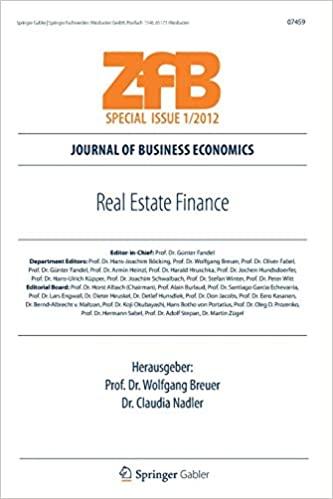Question
An issue of 8.5% Series C preferred stock has a par value of $75 million or $40 per share and was sold to investors several
An issue of 8.5% Series C preferred stock has a par value of $75 million or $40 per share and was sold to investors several years ago at par. According to the terms of the issue, the preferred is scheduled to be redeemed in 25 years at its par value of $40 per share. Dividends are paid quarterly but analyzed as if paid annually. The stock is currently trading at a discount for $35 per share.
1. Which of the factors listed below could have contributed to the stock trading at $35 per share instead of the par value of $40?
Interest rates have increased since the preferred was issued.
Interest rates have decreased since the preferred was issued.
The issuers debt/equity ratio has decreased significantly since the preferred was issued.
The issuers net income and free cash flow have increased significantly since the preferred was issued.
Answers a, c, and d are correct.
2. As a prospective investor in this preferred, what is the expected rate of return to redemption in 25 years? Assume dividends are paid annually and it is exactly 1 year to the next dividend.
4.93%
5.05%
8.50%
9.86%
10.11%
3. Using Macaulays Duration [but on an annual basis rather than semi-annual because m = 1], the Duration of the Preferred Stock is:
4.9 years
5.2 years
9.8 years
10.3 years
14.7 years
4. Using the convexity formula given on the last page of the exam, [but on an annual basis rather than semi-annual because m = 1], the Convexity of the Preferred Stock is:
81.2
148.1
162.7
1162.3
178.7
5. Suppose now the redeemable preferred has a redemption schedule requiring redemption of 1/15 of the original issue, or $5 million, at the end of years 11 through 25. It also specifies that the Trustee must randomly select the shares to be redeemed in each year. What is the expected term to redemption and rate of return with this redemption schedule?
17 Years and 4.93%
17 Years and 8.50%
18 Years and 9.86%
18 Years and 10.03%
19 Years and 10.11%
6. The Duration of the Preferred Stock with the data given in question #5 [on an annual basis with m = 1], is now:
4.2 years
4.4 years
4.6 years
8.9 years
9.3 years
7. The Convexity of the Preferred Stock with the data given in question #5 [on an annual basis with m = 1], is now:
66.8
110.4
121.2
121.5
133.7
8. Assume now the redeemable preferred has a redemption schedule requiring redemption of redemption of $5 million of preferred shares at the end of years 16 through 24 and the balance of $30 million in year 25. What is the expected term to redemption and rate of return with this redemption schedule?
21 years and 4.93%
21 years and 9.86%
22 years and 8.50%
22 years and 9.92%
23 years and 9.86%
9. The Duration of the Preferred Stock with the data given in question #8 [on an annual basis with m = 1], is:
5.0 years
9.1 years
9.5 years
10.0 years
10.4 years
10. The Convexity of the Preferred Stock with the data given in question #8 [on an annual basis with m = 1], is:
73.2
133.5
146.4
146.7
161.3
Step by Step Solution
There are 3 Steps involved in it
Step: 1

Get Instant Access to Expert-Tailored Solutions
See step-by-step solutions with expert insights and AI powered tools for academic success
Step: 2

Step: 3

Ace Your Homework with AI
Get the answers you need in no time with our AI-driven, step-by-step assistance
Get Started


